
© 2010-2024 by Fine Arts of the Southwest, Inc. All rights reserved.
Unauthorized reproduction or use is strictly prohibited by law.
“Rifle Butts”, an original ink-on-paper drawing of historic Plains Indian Wars-style wooden rifle stocks decorated with various brass tack designs by T.C. Cannon
Ex: T.C. Cannon Estate Collection, Joyce Cannon-Yi, Executor
This fascinating original ink on paper drawing of historic Plains Indian War artifacts was originally acquired
directly from Joyce Cannon-Yi, T.C. Cannon’s sister and official estate executor.
The drawing is a depiction of a group of five historic Plains Indian War-era wooden rifle butts decorated with
various decorative design patterns of brass tacks in the manner of the mid-to-late 19th Century when various Plains Indian warriors of the Sioux, Cheyenne, Arapaho, Kiowa, Comanche etc. would commonly decorate their weapons of war in such a manner; the wooden stocks of their Winchester, Sharps and other rifles as well as the wooden handles of
their tomahawks. As can be seen in the photo below, the great Sioux war Chief Sitting Bull decorated the stock of
his own personal rifle with brass tacks in precisely this way. Tommy Wayne (T.C.) Cannon was an ardent student of
The Indian Wars and their various battles, weapons and paraphernalia and he very often depicted elements and
relics of them in his various artworks.
This drawing is a somewhat poignant and artistic depiction of the weapons used in these terrible battles of The Indian Wars; Sand Creek, Red Cloud’s War, Washita River, Little Bighorn, Wounded Knee etc., implements associated with awful death and destruction, but still possessed of certain elements of beauty. Cannon very strongly identified personally with the Plains Indian warrior mentality; he was a member of the Kiowa Black Leggings Warrior Society and he volunteered for military service in Vietnam where he saw dangerous action as a paratrooper in the 101st Airborne Division. For his valor during The Tet Offensive in 1968, he was awarded two bronze stars.
“T.C. in 1975”
Photo source and © by Matthew Wysocki. Excerpted from “T.C. Cannon,
He Stood in the Sun”, by Joan Frederick, Northland Publishing, 1995, pp. 11.

“T.C. Cannon embodied traditional Native American culture combined with the best influences of Western civilization. He was a modern Indian living in a modern world, influenced by both cultures, and he used those influences to comment on the past and our present world.”
Quotation source and copyright: “T.C. Cannon, He Stood in the Sun”
by Joan Frederick, Northland Publishing, Flagstaff, AZ, 1995
"When Sitting Bull and his band surrendered at Dakota Territory’s Fort Buford in 1881 after fleeing to Canada, they turned in
their guns. The Sioux chief learned to write his name in Canada. The below circa 1876 Parker, Field flintlock musket bears his name, crudely carved into the left side of the stock (right), while the right side is adorned with tacks in the four winds pattern.”
Text above and photo below right source and © True West Magazine, courtesy Glen Swanson Collection
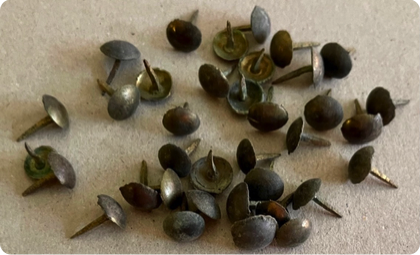
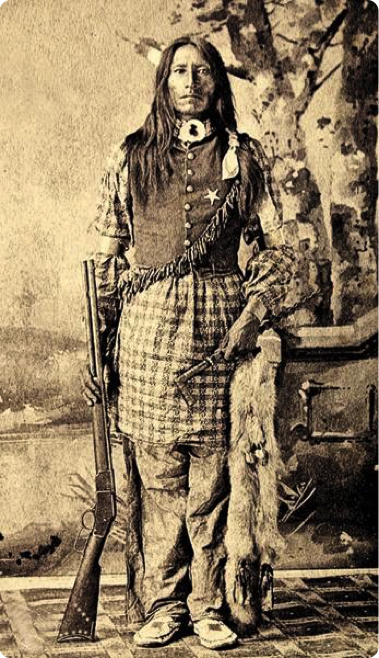
In 1972, America was engulfed in the momentous political and culture wars of Watergate, Vietnam and Nixon’s
landslide re-election. T.C. Cannon who had already experienced the horrors of Vietnam firsthand as a decorated paratrooper in the 101st Airborne Division, was in that year one of the red hottest artists in America, having at the tender age of 26 launched a landmark two-man show with his Santa Fe art teacher and colleague Fritz Scholder (1937-2005) at The Smithsonian Institution’s National Collection of Fine Arts in Washington, D.C. Entitled “Two American Painters”, this seminal exhibition completely shattered all pre-existing visual stereotypes about Native Americans, creating an exploration in irony and contemporary kitsch and culture which opened up a whole new phase
and dialogue of contemporary Native American art and established Cannon and Scholder at its very pinnacle.

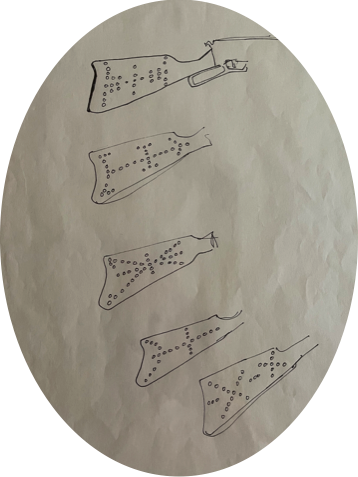
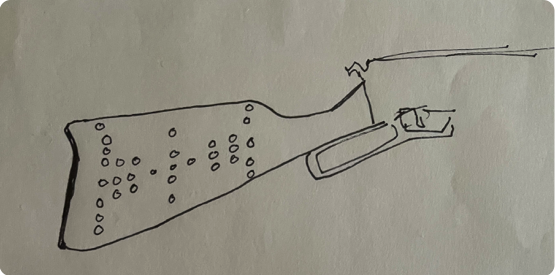

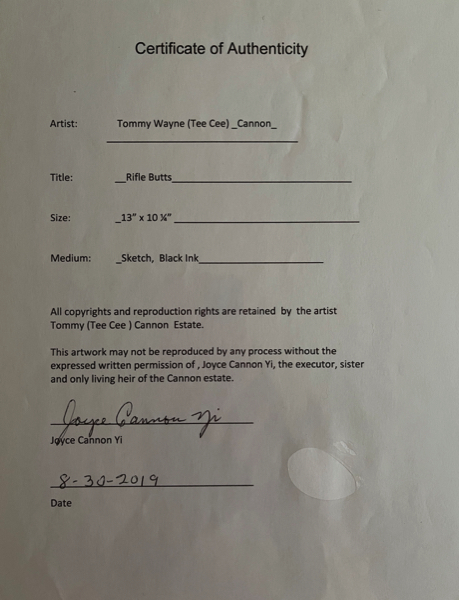

This drawing is very finely rendered in black ink on paper and it measures 13" in height and 10 1/4" in width. It is
in fairly good original condition overall with some slight creasing to areas of the paper, some of which could be matted out in framing, if desired. The paper has also had some yellowing. The drawing is unsigned, but it comes with an official T.C. Cannon Estate letter of authentication signed by Joyce Cannon-Yi. The drawing is unframed and is presently neatly shrink-wrapped on a styrofoam panel in plastic. We can recommend an excellent fine art framer in Santa Fe, if desired.
This drawing is an eloquent expression of the terrible pain, loss and tragedy of the Indian Wars combined with a
certain doomed but enduring and inspiring beauty created and exemplified by America’s great Plains Indian cultures,
of which T.C Cannon was a proud descendant and active member until his untimely and tragic death at the tender age
of 32. This drawing is a poignant reminder of his life, thoughts and extraordinary talent.
Price $4,150
Note: Historic Plains Indian decorated rifle butt photograph at top is photo source and © Rock Island Auctions

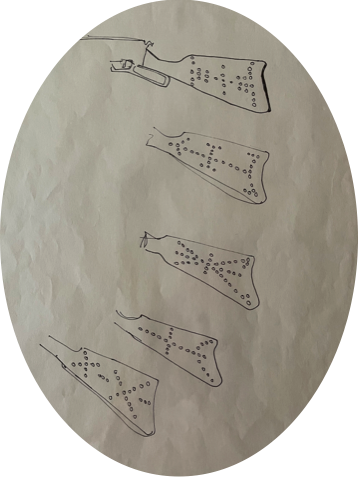

Lakota Indian Chief Sitting Bull, c. 1883.
Photo source and © Wikipedia
Historic brass tacks previously used to decorate an 1880's Plains Indian wood rifle butt.
A Plains Indian Warrior, 1880's, whose rifle butt has been decorated with brass tacks.
Photo source and © True West Magazine